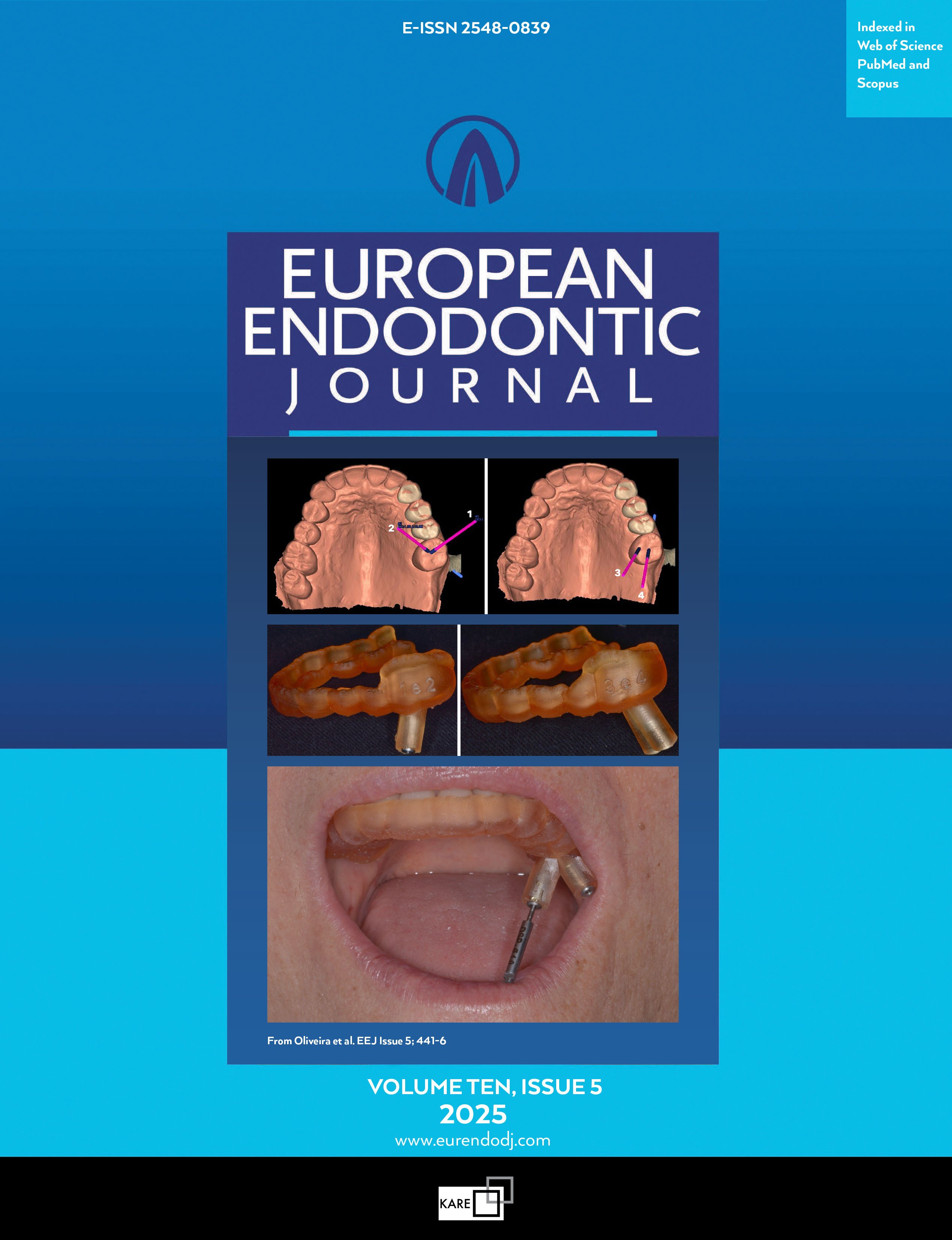Metrics
2024 IMPACT FACTOR
5 year Impact Factor
Eigenfactor Score
2024 CiteScore
Journal Citation Reports
(Clarivate 2025, JIF Rank)
Effective Management of Calcified Root Canals Using Static-guided Access: A Case Series
Jorge Carlos Alberdi1, Ignacio Troiano2, Miguel Angel Troiano3, Patricia Mónica Sanchez4, Flávio Rodrigues Ferreira Alves51Catholic University of Córdoba (UCC), Faculty of Health Sciences, Argentina; Rosario Dental Circle (COR), Rosario, Argentina; Institute of Troiano Dentistry (ITO), Rosario, Argentina; Endo Chat Research Group, Rio de Janeiro, Brazil2Institute of Troiano Dentistry (ITO), Rosario, Argentina; Medical University of South Carolina (MUSC), Charleston, USA
3Institute of Troiano Dentistry (ITO), Rosario, Argentina; University of Buenos Aires, Buenos Aires, Argentina
4Institute of Troiano Dentistry (ITO), Rosario, Argentina
5University of Grande Rio (UNIGRANRIO), Postgraduate Programme in Dentistry, Rio de Janeiro, Brazil; Department of Dental Research, Iguaçu University (UNIG), Faculty of Dentistry, Nova Iguaçu, Brazil
Root canal calcification poses a substantial challenge in endodontic practice and may lead to treatment failure. The difficulty lies in accessing, penetrating, and negotiating these canals. This article reports on a series of calcified root canals successfully treated using static-guided endodontics. Eleven cases of calcified root canals were treated by the same endodontist using static-guided endodontics. The sample encompassed four tooth types including a premolar with two canals, effectively managed using two templates (drill guides). Guided endodontic treatment was based on evidence of calcified root canals diagnosed with clinical, radiographic, and cone beam computed tomography (CBCT) findings. A high-resolution CBCT and an intraoral scan were used for virtual cavity planning. The CBCT and intraoral scan were superimposed, and virtual sleeves were accurately placed to avoid drilling deviation. Templates were fabricated and fitted, and guided access was conducted with low-speed drilling, monitored with intraoperative radiographs. Canals were negotiated with K-files, and prepared with Wave One Gold system, using 2.5% NaOCl as irrigant. In all cases, virtually planned guided coronal and root canal access allied to the 3D printed templates allowed canal location through obliterated pulp spaces with a conservative access approach and without accidents. The cases demonstrated that static-guided endodontics is a safe accurate treatment approach to access calcified canals, reducing working time, minimizing removal of tooth structure, and decreasing the risk of iatrogenic damage. (EEJ-2024-07-106)
Keywords: Calcified root canals, digital templates, guided endodontics, static-guided endodonticsManuscript Language: English
(374 downloaded)


